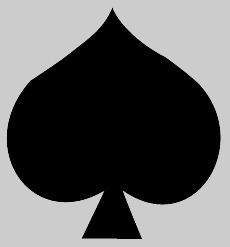Name U-181 Yard number 1021 Commissioned 9 May 1942 Launched 30 December 1941 Draft 5.35 m | Ordered 15 August 1940 Laid down 15 March 1941 Construction started 15 March 1941 Length 88 m Beam 7.5 m | |
 | ||
Fate Taken over by Japan, May 1945 Part of | ||
German submarine U-181 was a Type IXD2 U-boat of Nazi Germany's Kriegsmarine during World War II. The submarine was laid down on 15 March 1941 at the DeSchiMAG AG Weser yard at Bremen as yard number 1021. She was launched on 30 December 1941 and commissioned on 9 May 1942 under the command of Kapitänleutnant Wolfgang Lüth. After training with the 4th U-boat Flotilla at Stettin, U-181 was attached to the 10th flotilla for front-line service on 1 October 1942, then transferred to the 12th flotilla on 1 November.
Contents
Design
German Type IXD2 submarines were considerably larger than the original Type IXs. U-181 had a displacement of 1,610 tonnes (1,580 long tons) when at the surface and 1,799 tonnes (1,771 long tons) while submerged. The U-boat had a total length of 87.58 m (287 ft 4 in), a pressure hull length of 68.50 m (224 ft 9 in), a beam of 7.50 m (24 ft 7 in), a height of 10.20 m (33 ft 6 in), and a draught of 5.35 m (17 ft 7 in). The submarine was powered by two MAN M 9 V 40/46 supercharged four-stroke, nine-cylinder diesel engines plus two MWM RS34.5S six-cylinder four-stroke diesel engines for cruising, producing a total of 9,000 metric horsepower (6,620 kW; 8,880 shp) for use while surfaced, two Siemens-Schuckert 2 GU 345/34 double-acting electric motors producing a total of 1,000 shaft horsepower (1,010 PS; 750 kW) for use while submerged. She had two shafts and two 1.85 m (6 ft) propellers. The boat was capable of operating at depths of up to 200 metres (660 ft).
The submarine had a maximum surface speed of 20.8 knots (38.5 km/h; 23.9 mph) and a maximum submerged speed of 6.9 knots (12.8 km/h; 7.9 mph). When submerged, the boat could operate for 121 nautical miles (224 km; 139 mi) at 2 knots (3.7 km/h; 2.3 mph); when surfaced, she could travel 12,750 nautical miles (23,610 km; 14,670 mi) at 10 knots (19 km/h; 12 mph). U-181 was fitted with six 53.3 cm (21 in) torpedo tubes (four fitted at the bow and two at the stern), 24 torpedoes, one 10.5 cm (4.13 in) SK C/32 naval gun, 150 rounds, and a 3.7 cm (1.5 in) with 2575 rounds as well as two 2 cm (0.79 in) anti-aircraft guns with 8100 rounds. The boat had a complement of fifty-five.
Operational history
Under Lüth's command she sailed on two long combat patrols in late–1942 and 1943, haunting the waters off South Africa and Mozambique and sinking 22 ships for a total of 103,712 tons, making Lüth the second most successful U-boat commander of the war (after Otto Kretschmer) and earning him promotion to Korvettenkapitän and the Knight's Cross of the Iron Cross with Oak Leaves, Swords and Diamonds. He went on to command the 22nd U-boat Flotilla.
On 1 November 1943 under the command of Fregattenkapitän Kurt Freiwald and part of the 12th U-boat Flotilla. U-181 sailed from her base in Bordeaux, France to Penang, Malaya (now Malaysia) in mid–1944, sinking four ships totalling 24,869 tons. They carried a Bachstelze and a Naxos radar detector on this trip. On 1 October 1944 the U-boat was transferred to the 33rd U-boat Flotilla. She carried out only one additional patrol in the Indian Ocean, in 1944–1945, on their journey home with 130 tons of tin, 20 tons of molybdenum, 80-100 tons of raw rubber, and the latest radar-detection equipment FUMB26 TUNIS. They ended up sinking a single ship of 10,198 tons. Because of their cargo, they only had room for two torpedoes, which they used in this sinking. The trip home was aborted when the main bearings started to wear out, prompting a return to Batavia on 6 January 1945, but transferring their fuel to U-843 near the Cocos Islands on the way.
On the 12th, they were ordered to Penang, but only made it as far as Singapore. There they worked on repairing the engines and fitting a Schnorchel, before attempting a renewed trip home starting on 10 May.
Wolfpacks
U-181 took part in one wolfpack, namely.
Fate
On 6 May, Otto Giese dropped the two code-key machines into the Singapore harbor, and later that day, the boat was "taken" by the Japanese Captain Marujama. Admiral Paul Wenneker sent the message on 8 May, that Lubeck was in place, "an early agreement between Germany and Japan, if one nation lost and the other continued fighting, the former would render its war material to the latter." The crew was taken to Batu Pahat.
After Germany's surrender in May 1945 the U-boat was taken over by Japan at Singapore and commissioned as I-501 on 15 July 1945. She surrendered to Allied forces there in August 1945, and was sunk on 12 February 1946 in the Strait of Malacca, in position 03°05′50″N 100°41′50″E, by the British frigates HMS Loch Glendhu and HMS Loch Lomond.
